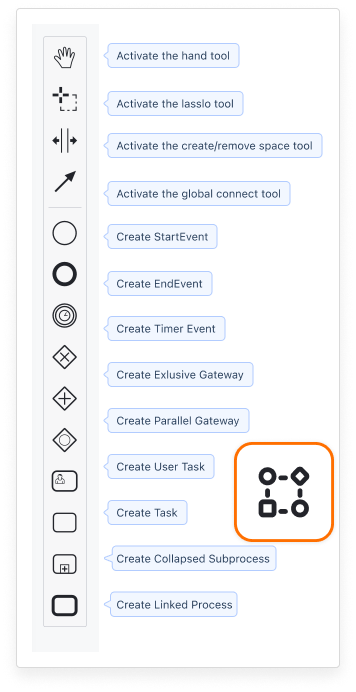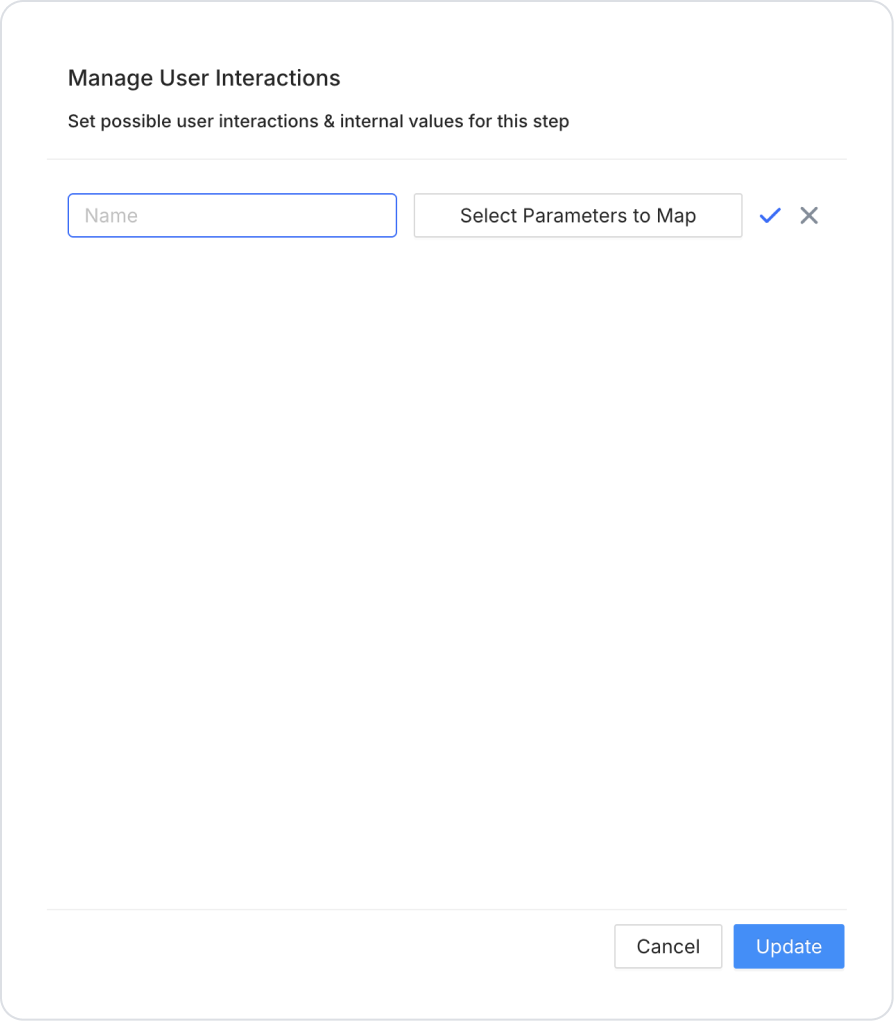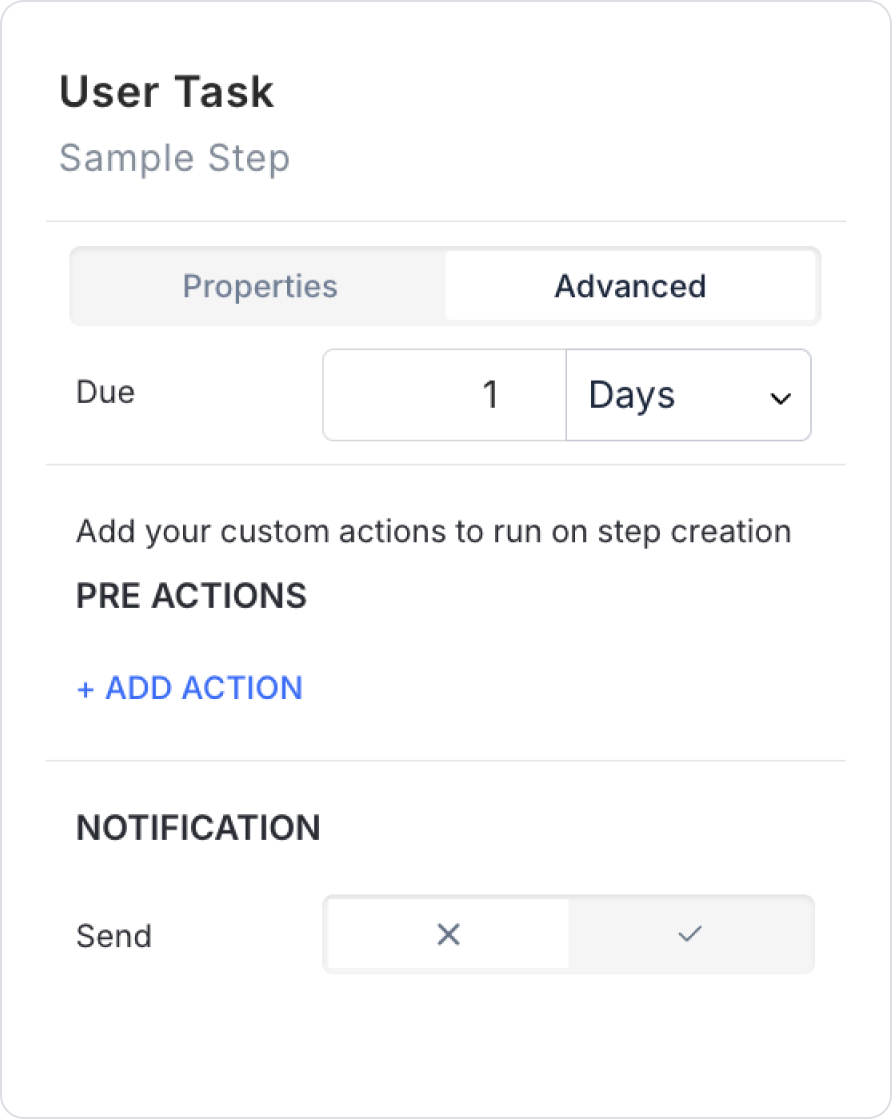

Kuika’s Process Automation module streamlines mobile and web application development by automating workflows, enabling efficient management of repetitive and time-sensitive tasks. This results in significant savings in time and effort. With Process Automation, workflows can be designed, system and custom actions can be added, and task assignments can be managed. This module is a built-in feature of the Kuika platform and does not function as a separate tool. All integration operations, system actions, and data management capabilities available in Kuika can be directly utilized within Process Automation.
The Process Automation module can be applied in various areas such as automated reporting, data analytics, HR automation, customer service, and support operations. In this course, you will learn how to build workflows using the Process Automation module.

Follow the steps below to create Process Automation:
After completing these steps, you can continue with the workflow creation process.
When you switch to the Process Automation module on the Kuika platform, the workflow creation screen is displayed.

From the left panel, you can create new workflows, access added workflows, define parameters and custom actions.
B. Workflow Management Area

Process Automation Tools
Activate The Hand Tool
Activate The Lasso Tool
Activate The Create/Remove Space Tool
Activate The Global Connect Tool
Create Start Event
Create End Event
Create Timer Event
Create Exclusive Gateway
Create Parallel Gateway
Create User Task
Create Task
Create Collapsed Sub Process
Create Linked Process
Design Area (Canvas)
When creating your workflow on the canvas, various tools are available to add, edit, and link elements. The function and usage examples of each tool are explained below:

Appended End Event
Allows you to add an End Event directly to a selected element. This feature allows you to quickly end the workflow.
Append Text Annotation
Allows you to add a description box to the selected item. Descriptions make the workflow logic clearer and facilitate internal communication.
Create Task
Allows you to add a task to the selected item. This task can be an action that can be automatically executed by the system.
Create Exclusive Gateway
Allows you to add a decision point (Exclusive Gateway) after the selected item. This step changes the direction of the workflow based on certain conditions.
Change Type
Allows you to change the type of the selected element. This allows you to convert an incorrectly selected element during the design process without having to recreate it.
Remove
Allows you to delete the selected element(s). Used to quickly clean up incorrect or unnecessary steps.
Connect Using Sequence Flow / Message Flow / Association
Used to establish connections between elements.
C. Process Automation Properties Panel

Recurring Step (Scheduled Steps)
Recurring Step is defined by adding a Timer Boundary Event to a specific task (Task or User Task). This structure allows a step to be automatically re-run at specific intervals or redirected to an alternative flow after a certain period of time.
Usage:
Technical Features:
This tool allows you to determine the conditions and order of operations in a workflow. The purpose of the Gateway is to select and execute only one of multiple possible paths based on defined conditions. This allows the process to branch according to different scenarios.
Parameters defined in the parameter panel can be called and used in conditions using the Symbol Picker located under the “None” option. These variables can be of different data types, such as string, number, boolean, or datetime. The parameter selected via the Symbol Picker is evaluated using a comparison operator (e.g., equals, not equals, greater than, less than, contains) specified in the Select Box. If the condition is true, the output path associated with that condition is executed.
Multiple outputs can be defined on an Exclusive Gateway. One of these outputs must be designated as the default path using the “Will execute otherwise” option. This path is activated if none of the other conditions listed above are met. If, for example, ‘Yes’ is selected for this field, the first path checked in the workflow is evaluated as “No.” Ordering is important because the system evaluates conditions from top to bottom and does not check paths after the first true condition. Conditions can be reordered using drag-and-drop.
The order of condition truth directly affects process behavior. The most general condition should be placed at the bottom, and the most specific condition at the top. Otherwise, an unexpected path may run when all conditions are not met. It is recommended to add a condition to each exit path. However, at least one path must be set to “Will execute otherwise” so that the path the process will take when all conditions fail is clearly defined.
Used to branch the workflow in parallel when multiple conditions can be met simultaneously. Unlike the Exclusive Gateway, the Inclusive Gateway triggers all paths associated with the conditions if more than one condition is true at the same time.
Independent conditions can be defined for each output path. Conditions are created using variables located in the parameter panel via the Symbol Picker tool. During the evaluation process, the system examines all conditions independently of each other. Therefore, if multiple conditions return “true,” all of these paths are executed simultaneously.
At least one path on the Inclusive Gateway must be designated as “Will execute otherwise”. This option ensures that the process continues without interruption if none of the other defined conditions are met.
Inclusive Gateway provides flexible parallel execution in workflow scenarios. For example, in an order process, if both the “Update Invoice” and “Return Request” conditions are met at the same time, the system can start both processes simultaneously.
Create Inclusive Gateway enables business processes to branch dynamically based on conditions and start multiple processes at the same time.
This tool is the step where automatic tasks to be executed by the system on the Kuika platform are defined. It is typically used to model processes that do not require user interaction. For example, tasks such as making API calls, integrating with external services, updating system parameters, or preparing data in the background are performed in this step.
The Create Task step contains two main structures: Actions and Step Outputs. The Actions section is where the system actions that will be triggered when this step is executed are defined. Here, one or more previously defined actions can be executed in sequence. These actions can be, for example, a REST API call or sending data to a previously defined Custom Action and receiving a response.
The Step Outputs section is where the data obtained as a result of the action is mapped to parameters that will be used in the workflow. In this section, the “+SELECT WF PARAMS TO MAP” option is used to determine which variables the values returned by the action will be transferred to. This way, values obtained from external systems or calculated in the background can be used in the workflow for conditions, notifications, or other tasks.
This task type does not display any forms or notifications to the user. It manages processes that occur entirely in the background. When properly positioned, it automates the workflow and eliminates the need for manual intervention. Each Create Task step can be configured not only to perform a single action but also to execute multiple automated steps in sequence.
This tool is used to define tasks in the workflow that require manual intervention or approval from the user. It is used in situations where the user needs to perform a specific action, enter data, fill out a form, or make a decision. The process does not proceed to the next step until the user completes the assigned task. Therefore, User Task steps function as critical decision points or data collection areas in the process.
Create User Task offers flexible configuration options for designing interactive processes with users in the system. This step can be associated with a form to collect data from the user and can be customized with various fields such as user-specific assignments, notifications, descriptions, deadlines, and buttons.
Properties Panel:

The User Interaction element is used to define steps in a workflow that require human interaction, such as direct feedback from the user, form filling, decision making, or entering specific data. This step separates the business process from system actions and makes user input mandatory.
Usage Scenarios
Technical Specifications
Interaction Flow
Monitoring and Reporting
Tips and Best Practices
Advanced Use: Form Integration
The form linked to the User Interaction step supports the following features:
Advanced Panel:

Kuika's Process Automation module uses the Workflow Screen creation panel to manage and automate business processes. This panel allows you to create your business process, define processes and visualize process flows.



A Delegation System is a system that allows a user to delegate tasks to another team member in their absence. For example, in an application where leave processes are managed, if the manager is on leave, the proxy system is activated so that the employee's leave can proceed without waiting for approval. By appointing a proxy, the manager ensures that the processes continue without interruption.
Thanks to the proxy system, the appointed proxy can view and manage the manager's business processes on his behalf. This system makes processes more efficient and ensures business continuity. In Process Automation, the user can appoint a proxy and have their work managed by the proxy.
This system ensures that processes continue without interruption and helps to manage proxy assignments regularly.
Kuika's Process Automation module offers a powerful automation solution to speed up business processes and increase efficiency. Thanks to this module, you can optimize your processes by minimizing manual operations and save time and resources. You can use the Process Automation module to manage your processes more effectively and make your workflows efficient.